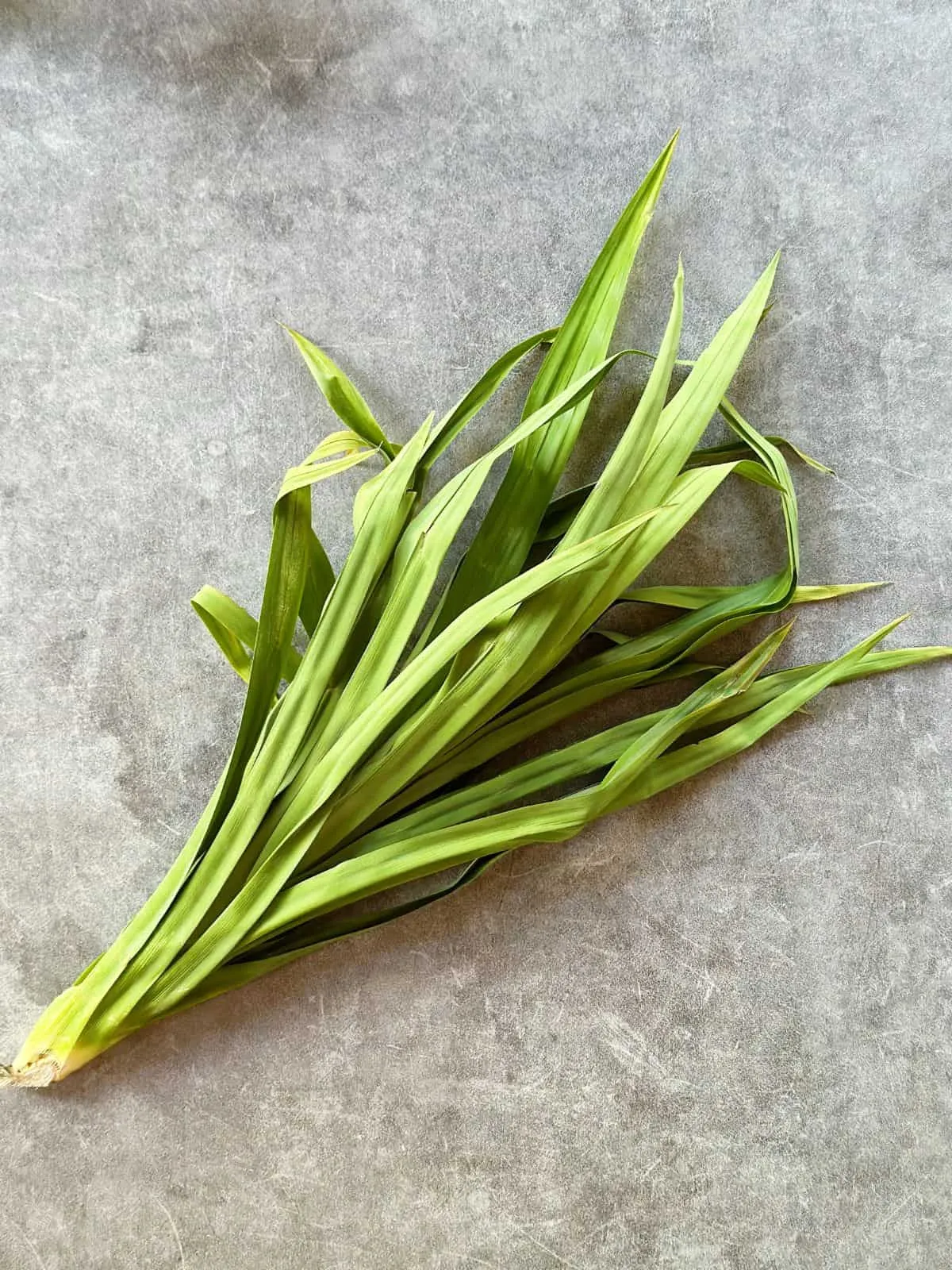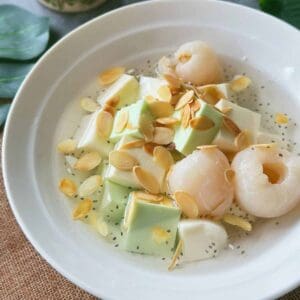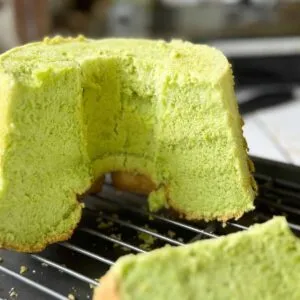If you’re wary of artificial pandan extract, this homemade pandan extract (pandan paste) is exactly what you need. Made with just two ingredients, it will give your dessert a natural, mellow green hue and a soothing aroma.

What is Pandan?
If you’re in a hurry and just want to get cooking, feel free to jump into the recipe card.
Think of pandan as Southeast Asia’s answer to vanilla—a subtle, mellow flavor with a sweet, nutty, almost floral aroma that makes you smile before you even take a bite.
In Vietnam, we call it Lá Dứa, sometimes Sâm Dứa or Lá Nếp, and it’s especially loved in the South. There, it sneaks its fragrance into many savory dishes like Vietnamese chicken & rice (Cơm Gà Hải Nam) or sticky rice (Xôi).
But honestly, pandan really shines in desserts—Chè (sweet dessert soup), Bánh Kẹp Lá Dứa (pandan waffles), Bánh Bò Nướng (pandan honeycomb cake), and Bánh Da Lợn (layered steamed cake) are just heavenly.

You can grab artificial pandan extract at any Asian supermarket, but be careful—too much can make your dish taste fake and turn it that unnaturally bright green. The good news? Making pandan extract at home is easier than you think, and the flavor is way more authentic.
There are two main ways to make it:
Pandan juice – takes about 10 minutes and works perfectly for recipes with plenty of liquid, like pandan sticky rice or pandan coconut jelly.
Pandan paste (concentrated juice) – starts the same way, but then you let it sit for 1–2 days to extract the rich, concentrated layer. This version is perfect for drier desserts, like pandan bread, where you want maximum flavor without adding extra liquid.
Ingredients & Tools for Pandan Extract
- Pandan leaves – fresh or frozen.
- Water – soak the pandan leaves in hot water for 2 minutes, then blend with room-temperature water. This little trick, passed down by Vietnamese cooks, helps tame any slight bitterness.
- Tools – high-speed blender, fine strainer, and cheesecloth (or muslin cloth).
Instructions
Step 1: Defrost pandan leaves if frozen, wash thoroughly, and cut into 1.5-inch (4 cm) pieces. Optional: soak in hot water for 2 minutes to reduce bitterness.
Step 2: Place the pandan leaves and room-temperature water in a high-speed blender and blend until smooth.
Step 3: Line a bowl with cheesecloth, pour in the blended mixture, and squeeze out all the liquid to make pandan juice. Use immediately or let it sit.
Step 4 (Optional): After 1 day, the liquid will separate. Pour off the water to collect the concentrated pandan paste.




Storage

- Short-term: Keep pandan juice (or concentrated paste) in an airtight glass container in the fridge for up to 1 week.
- Long-term: Freeze in ice cube trays for up to 1 month—perfect for when you want small, ready-to-use portions.
Substitutes for Pandan Extract
- Pandan leaf powder: A great alternative to both homemade and store-bought extract—I actually prefer it over artificial extract.
- Artificial pandan extract: If using this, add a touch of yellow food coloring to give it a more natural hue.
More Sweet & Savory Pandan Recipes

Natural Pandan Paste (Pandan Extract) from Leaves
Equipment
- 1 High-speed blender
- 1 Strainer
- Cheesecloth
Ingredients
- 15 pandan leaves
- 2 cup room-temperature water (500ml)
- Hot water (to soak the pandan leaves) (optional)
Instructions
- Defrost (if frozen), wash, and cut pandan leaves into 1.5-inch (4 cm) pieces. Optional: soak in hot water for 2 minutes to reduce bitterness.
- Blend the leaves with room-temperature water on high speed until smooth.
- Strain the mixture through cheesecloth over a bowl, squeezing out all the liquid to make pandan juice. Use immediately or let it sit to concentrate.
- For a concentrated extract, refrigerate in an airtight container for 1–2 days. After separation, pour off the water to keep the rich pandan paste.


